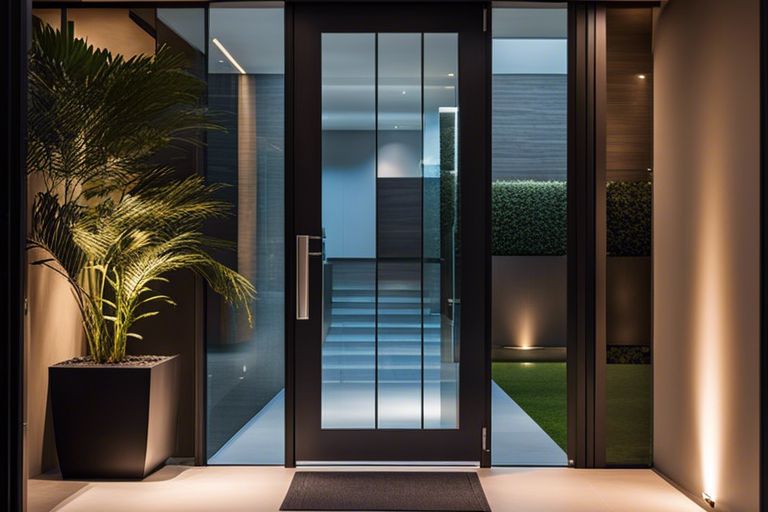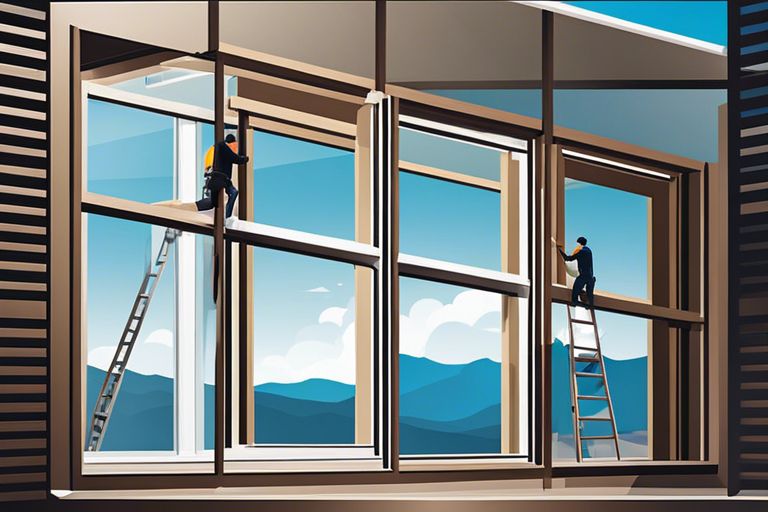When considering installing flat rooflights in your home, it’s important to understand the regulations surrounding planning permission. In the UK, flat rooflights are generally considered permitted development as long as they meet certain criteria, such as not protruding more than 150mm above the existing roof plane and not being higher than the highest part of the roof. However, there are exceptions, particularly in conservation areas, National Parks, and Areas of Outstanding Natural Beauty, where additional restrictions may apply. It’s crucial for homeowners to check with their local planning authority before proceeding with the installation to avoid any potential issues or fines. By being informed about the regulations, homeowners can confidently enhance their living space with stylish and functional rooflights.
Key Takeaways:
- Flat rooflights do not typically require planning permission as they fall under permitted development rights in the UK.
- Homeowners should still check with their local planning authority to ensure they comply with regulations and any restrictions in their area.
- Installing flat rooflights can enhance natural light in a property, improve ventilation, and add a modern aesthetic to the home.
Understanding Planning Permission
Basic Principles of Planning Permission
When considering any home renovation or extension project, it is crucial to understand the basic principles of planning permission. Planning permission is required to carry out certain types of development, ensuring that the local council has assessed the impact of the proposed changes on the surrounding area. The purpose of planning permission is to control the way our towns, cities, and countryside develop, taking into account factors such as aesthetics, safety, and the environment.
Under the Town and Country Planning Act 1990, planning permission is necessary for a range of projects, including alterations to the external appearance of a property and the installation of new windows or rooflights. It is essential to familiarise yourself with the planning regulations that apply to your area, as failure to obtain the necessary permission can result in enforcement action being taken by the local planning authority.
Specific Considerations for Flat Rooflights
When it comes to flat rooflights, there are specific considerations that homeowners need to be aware of regarding planning permission. Generally, planning permission is not required for flat rooflights as long as certain criteria are met. These criteria often include the height of the rooflight above the existing roof, the size of the rooflight, and whether the property is located within a conservation area or is a listed building.
Homeowners should also be aware that building regulations still apply to flat rooflights, ensuring that they meet safety and thermal efficiency standards. It is advisable to seek professional advice when installing flat rooflights to ensure compliance with both planning and building regulations.
It is important to note that while planning permission may not be needed for flat rooflights in many cases, it is always best to check with your local planning authority before proceeding with any installation. This will help avoid any potential issues or delays in the future and ensure that your home improvement project is carried out smoothly and legally.

Legal Framework for Flat Rooflights
National Regulations and Guidelines
Flat rooflights are subject to national regulations and guidelines set by the government. These regulations ensure that the installation of flat rooflights meets safety standards and does not pose a risk to the occupants of the building. The Building Regulations Approved Document B covers fire safety requirements for buildings, including the use of rooflights.
Additionally, guidelines such as Part K of the Building Regulations focus on the protection from falling, collision, and impact. It is essential for homeowners to comply with these regulations when installing flat rooflights to avoid any legal issues and ensure the safety of the residents.
Local Authority Rules
Local authorities may have specific rules and regulations regarding the installation of flat rooflights. Homeowners are advised to check with their local planning department to determine if planning permission is required for the installation of flat rooflights. Some local authorities may have restrictions on the size, placement, and appearance of rooflights, which homeowners need to adhere to.
When applying for planning permission, homeowners may need to submit detailed plans and drawings of the proposed flat rooflights. Failure to comply with local authority rules can lead to fines and even the removal of the rooflights. It is crucial for homeowners to thoroughly research and follow the guidelines set by their local authority to avoid any legal consequences.
Installation and Compliance
Steps to Ensure Compliance
Before installing flat rooflights, homeowners should check with their local planning authority to determine if planning permission is required for the proposed work. It is important to consult the relevant guidelines and regulations to ensure compliance with building codes and regulations. Any non-compliance can result in fines or even the removal of the structure, so it is essential to follow the necessary steps.
Furthermore, homeowners should work closely with their chosen installation company to ensure that the flat rooflights are installed correctly and meet all necessary standards. This includes ensuring the roof structure can support the weight of the rooflights and that they are properly sealed to prevent leaks. By taking these steps, homeowners can avoid potential issues down the line.
Professional Assessment and Advice
Seeking professional assessment and advice before installing flat rooflights can help homeowners navigate the complexities of planning permission and compliance. Professionals such as architects or structural engineers can provide expert guidance on the requirements and regulations that need to be adhered to.
Additionally, a professional assessment can help homeowners identify any potential challenges or issues that may arise during the installation process. By addressing these proactively, homeowners can avoid costly mistakes and ensure that the flat rooflights are installed properly and in compliance with regulations.

Additional Considerations
Impact on Property Value
Installing flat rooflights can have a significant impact on the value of your property. These modern and sleek rooflights can enhance the aesthetic appeal of your home, making it more desirable to potential buyers. The added natural light and feeling of spaciousness they bring can also make your property stand out in the market.
However, it is essential to ensure that the installation is done professionally and in line with building regulations. Poorly installed rooflights can have the opposite effect on property value, potentially decreasing it due to issues such as leaks or structural problems.
Energy Efficiency and Environmental Concerns
Flat rooflights can contribute to the energy efficiency of your home by allowing more natural light to enter, reducing the need for artificial lighting during the day. This can lead to lower energy bills and a smaller carbon footprint, which is beneficial for both your wallet and the environment.
Choosing energy-efficient flat rooflights with double or triple glazing can further enhance their insulation properties, helping to regulate the temperature in your home throughout the year. By investing in eco-friendly rooflights, you can enjoy a comfortable living space while reducing your environmental impact.

Do Flat Rooflights Require Planning Permission? Insights for Homeowners
Conclusively, homeowners in the UK contemplating the installation of flat rooflights should be aware that planning permission may not always be necessary. However, it is crucial to check with your local planning authority to determine if your property falls under permitted development rights or if any restrictions apply. Understanding the regulations and seeking professional advice can help you navigate the process smoothly and ensure compliance with the guidelines set forth. By adhering to the necessary permissions and building regulations, homeowners can enhance their living spaces with stylish and functional flat rooflights while avoiding any potential legal complications.
FAQ
Q: Do flat rooflights require planning permission?
A: Yes, in most cases, installing flat rooflights will require planning permission from your local authority. This is because they can affect the external appearance of your property and may impact your neighbours.
Q: What factors determine whether planning permission is needed for flat rooflights?
A: The need for planning permission depends on various factors such as the size, location, and design of the flat rooflights. If they are going to be visible from the street or impact the privacy of neighbours, you are more likely to require permission.
Q: How can I find out if I need planning permission for flat rooflights?
A: To determine if you need planning permission for flat rooflights, you should consult with your local planning department. They will be able to provide guidance based on your specific circumstances and advise you on the necessary steps to take.






